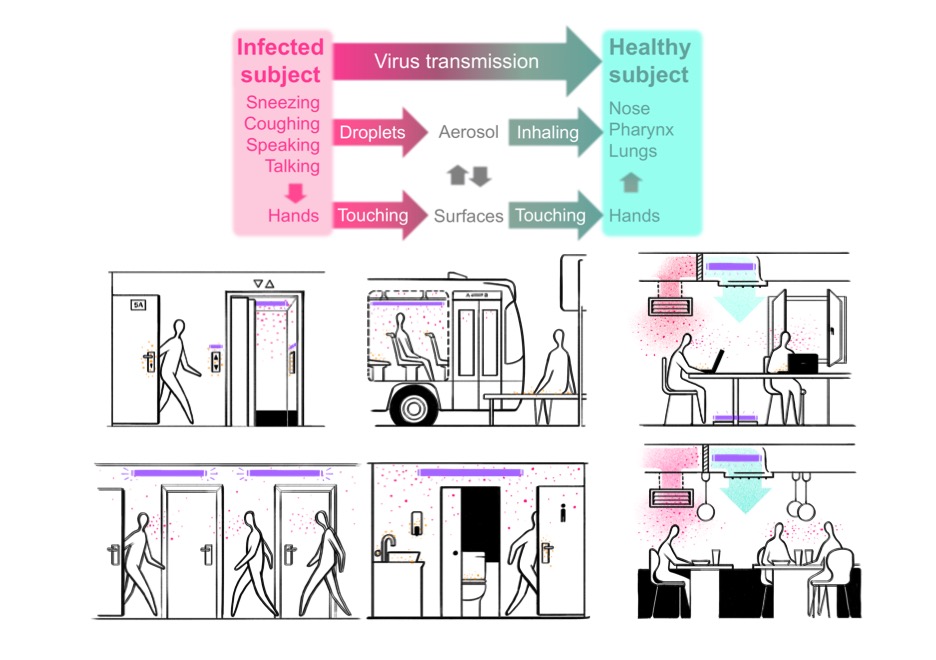Since many places have ended lockdowns and return to usual life but the threat of COVID-19 continues, it is important to maintain social distance and intensify disinfection in public areas. UV light disinfection, which has been a popular application ever since the beginning of COVID-19 outbreak, is now supported by scientists as an effective solution to prevent COVID-19 transmission for indoor environment.
A study recently published in ACS Nano by experts in the fields of virology, immunology, aerosols, architecture, and physics, have surveyed the possible methods to prevent SARS-CoV-2 propagation in indoor spaces. Following this survey, they concluded that UV light could be a reliable and affordable method to inactivate SARS-CoV-2.
The study gives information on the currently available UV-C sources including fluorescent lamps, microcavity plasmas, and LEDs and addresses that, by irradiating this type of light inside the ventilation systems of buildings and in shared indoor spaces while not in use, it is possible to quickly and efficiently deactivate airborne and surface-deposited SARS-CoV-2 viruses.

(Image: ICFO)
They also explore costs and investments in deploying such technology and argue that a global capital investment of a few billion dollars in UVC sources could protect of the order of 1 billion indoor workers worldwide.
Despite the effectiveness of UVC disinfection has been supported and proven by many researchers and survey, it is also worth noticing that direct exposure to any kind of UV light is dangerous. UV light disinfecting products have to be correctly operated and used to avoid risks.












